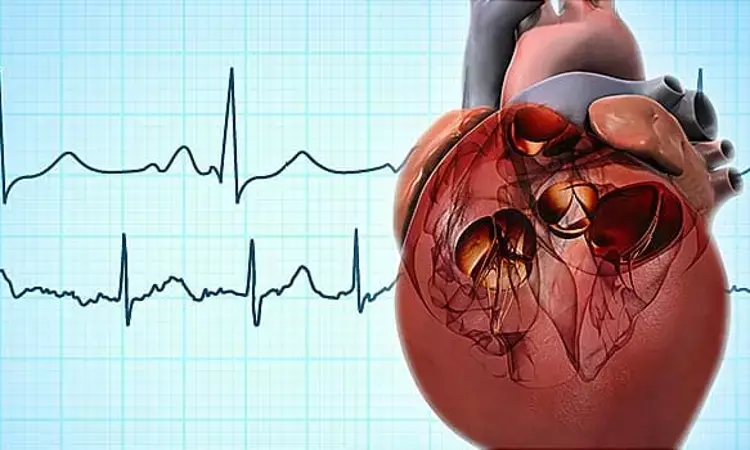- Home
- Medical news & Guidelines
- Anesthesiology
- Cardiology and CTVS
- Critical Care
- Dentistry
- Dermatology
- Diabetes and Endocrinology
- ENT
- Gastroenterology
- Medicine
- Nephrology
- Neurology
- Obstretics-Gynaecology
- Oncology
- Ophthalmology
- Orthopaedics
- Pediatrics-Neonatology
- Psychiatry
- Pulmonology
- Radiology
- Surgery
- Urology
- Laboratory Medicine
- Diet
- Nursing
- Paramedical
- Physiotherapy
- Health news
- Fact Check
- Bone Health Fact Check
- Brain Health Fact Check
- Cancer Related Fact Check
- Child Care Fact Check
- Dental and oral health fact check
- Diabetes and metabolic health fact check
- Diet and Nutrition Fact Check
- Eye and ENT Care Fact Check
- Fitness fact check
- Gut health fact check
- Heart health fact check
- Kidney health fact check
- Medical education fact check
- Men's health fact check
- Respiratory fact check
- Skin and hair care fact check
- Vaccine and Immunization fact check
- Women's health fact check
- AYUSH
- State News
- Andaman and Nicobar Islands
- Andhra Pradesh
- Arunachal Pradesh
- Assam
- Bihar
- Chandigarh
- Chattisgarh
- Dadra and Nagar Haveli
- Daman and Diu
- Delhi
- Goa
- Gujarat
- Haryana
- Himachal Pradesh
- Jammu & Kashmir
- Jharkhand
- Karnataka
- Kerala
- Ladakh
- Lakshadweep
- Madhya Pradesh
- Maharashtra
- Manipur
- Meghalaya
- Mizoram
- Nagaland
- Odisha
- Puducherry
- Punjab
- Rajasthan
- Sikkim
- Tamil Nadu
- Telangana
- Tripura
- Uttar Pradesh
- Uttrakhand
- West Bengal
- Medical Education
- Industry
Oral inhalation flecainide may help restore sinus rhythm in atrial fibrillation patients

Netherlands: A recent study in the journal Circulation: Arrhythmia and Electrophysiology found the administration of flecainide via oral inhalation to be safe and feasible for the conversion of recent-onset atrial fibrillation to sinus rhythm (SR). Also, it was potentially effective in acute care settings.
Currently, oral and intravenous flecainide is recommended for cardioversion of atrial fibrillation. Harry J G M Crijns, Maastricht University Medical Center and CARIM, Maastricht, the Netherlands, and colleagues aimed to evaluate the feasibility of delivering flecainide via oral inhalation (flecainide acetate inhalation solution) for acute conversion in an open-label, dose-escalation study. The researchers hypothesized that delivery of flecainide by oral inhalation would quickly reach plasma concentrations sufficient for restoring sinus rhythm in patients with recent-onset atrial fibrillation.
For this purpose, 101 patients with symptomatic atrial fibrillation (for ≤48 hours) were self administered flecainide acetate inhalation solution using a nebulizer (30 mg [n=10], 60 mg [n=22], 90 mg [n=21], 120 mg [n=19], and 120 mg in a formulation containing saccharin [n=29]). The researchers then obtained electrocardiograms and flecainide plasma concentrations, 4-hour Holter was used to monitoring cardiac rhythm, and adverse events were recorded.
The key findings of the study were as follows:
- Conversion rates increased with dose and with the maximum plasma concentrations of flecainide.
- At the highest dose, 48% of patients converted to sinus rhythm within 90 minutes from the start of inhalation.
- Among patients who achieved a maximum plasma concentration >200 ng/mL, the conversion rate within 90 minutes was 50%; for those who achieved a maximum plasma concentration <200 ng/mL, it was 24%.
- The conversion was rapid (median time to conversion of 8.1 minutes from the end of inhalation), and conversion led to symptom resolution in 86% of the responders.
- Adverse events were typically mild and transient and included: cough, throat pain, throat irritation; at the highest dose with the formulation containing saccharin, these adverse events were reported by 41%, 14%, and 3% of patients, respectively.
- Cardiac adverse events consistent with those observed with oral and intravenous flecainide were uncommon and included post-conversion pauses (n=2), bradycardia (n=1), and atrial flutter with 1:1 atrioventricular conduction (n=1); none required treatment, and all resolved without sequelae.
The researchers conclude, "administration of flecainide via oral inhalation was shown to be safe and to yield plasma concentrations of flecainide sufficient to restore sinus rhythm in patients with recent-onset atrial fibrillation."
Reference:
Crijns HJGM, Elvan A, Al-Windy N, Tuininga YS, Badings E, Aksoy I, Van Gelder IC, Madhavapeddi P, Camm AJ, Kowey PR, Ruskin JN, Belardinelli L; INSTANT Investigators. Open-Label, Multicenter Study of Flecainide Acetate Oral Inhalation Solution for Acute Conversion of Recent-Onset, Symptomatic Atrial Fibrillation to Sinus Rhythm. Circ Arrhythm Electrophysiol. 2022 Feb 24:CIRCEP121010204. doi: 10.1161/CIRCEP.121.010204. Epub ahead of print. PMID: 35196871.
KEYWORDS: Circulation, flecainide acetate, atrial fibrillation, sinus rhythm, cardioversion, American Heart Association, oral inhalation, Harry J G M Crijns, recent-onset atrial fibrillation
Dr Kamal Kant Kohli-MBBS, DTCD- a chest specialist with more than 30 years of practice and a flair for writing clinical articles, Dr Kamal Kant Kohli joined Medical Dialogues as a Chief Editor of Medical News. Besides writing articles, as an editor, he proofreads and verifies all the medical content published on Medical Dialogues including those coming from journals, studies,medical conferences,guidelines etc. Email: drkohli@medicaldialogues.in. Contact no. 011-43720751


